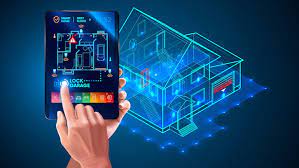 Smart home technologies are not part of the home care solution set. Despite the labor shortage that is impacting the home care industry, technology in the home, especially smart home technology, is not part of the home care solution set. Yet with appropriate use of sensors, cameras, and voice interactions, families and home care providers could improve the wellbeing of older adults, many of whom are alone at home for long stretches of time. What is needed and will emerge over the next five years? Moving forward, there will be multi-tiered offerings customized remotely, adjusted as a person becomes frail. Smart home technology will be used by home care companies to help compensate for labor shortages, warning of in-home issues during those times when the care recipient is alone. What will be available?
Smart home technologies are not part of the home care solution set. Despite the labor shortage that is impacting the home care industry, technology in the home, especially smart home technology, is not part of the home care solution set. Yet with appropriate use of sensors, cameras, and voice interactions, families and home care providers could improve the wellbeing of older adults, many of whom are alone at home for long stretches of time. What is needed and will emerge over the next five years? Moving forward, there will be multi-tiered offerings customized remotely, adjusted as a person becomes frail. Smart home technology will be used by home care companies to help compensate for labor shortages, warning of in-home issues during those times when the care recipient is alone. What will be available?
Opt-in collection of meaningful data. Older adults are rightly skeptical about technology designed to monitor them – equating monitoring with spying on them and invading their privacy. Instead, tech offerings need to be perceived as an in-home team of services, unobtrusively managing features that make a home an inviting and comfortable place while protecting the individual's autonomy and privacy.
Pattern recognition. AI and Machine learning is mainstream in multiple domains, including an increasing acceptance in healthcare. But it is beginning to matter in the care of older adults. Multiple tech firms are now deploying pattern analysis and machine learning in the care of older adults, enabling comparison of patterns to user baseline profiles, identifying trend lines in behavior and supporting appropriate alerting of staff in the event that pattern changes require alerting staff, or identifying improvements in wellbeing – such as increased activity, exercise or family engagement.
Home as a caregiver. Multiple tiers of service will further emerge based on user status and preferences. 'One size supposedly fits all' is the characteristic of many individual smart home technologies today. This won’t work for older adults moving forward, instead it will be multi-tiered offerings, customized remotely, adjusted as a person becomes frail. Smart home technology will be used by home care companies to help compensate for labor shortages, warning of in-home issues during those times when the care recipient is alone.
[Part of the series prior to release of "Future of Smart Homes and Older Adults" report]

 Smart home technologies are not part of the home care solution set.
Smart home technologies are not part of the home care solution set.
Comments
not yet grown up
Laurie,
The care-giver, the care-receiver and the possible technology to service are like teenagers, dancing around, impressed by their own looks and capabilities, yet to immature to really date on a route to get married. They all think that they have the solution or have the answer but, like the real teenager, they are self-centered and selfish, wanting to control and own it. None is really interested to set the aging process free of its bondage which comes when life's strength breakdown and or gives up. If the care-giver, the care-receiver and technology ("smart" in its full sense of the word) can come to maturity, and finally grows up, and it will! Then and only then can we come to a truly democratized service and care system that liberates many seniors/older-adults and frail from becoming victim to the aging process. Not to save on liability insurance or on labor cost but truly to manage the process of aging proactively, to master aging positively, as we have done with so many other care and healthcare issues of life. Too many entrepreneurs and companies like to be and stay teenager, never grow up as it is a fun stage of life. Times ask for more and all should be challenged to democratize the aging process.
Mach S.